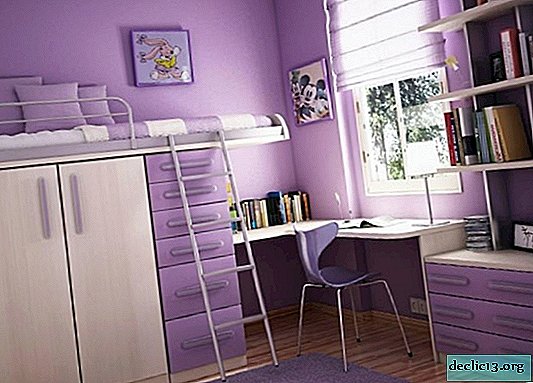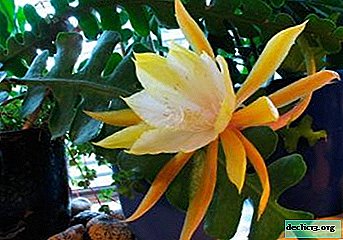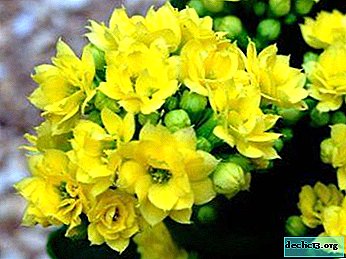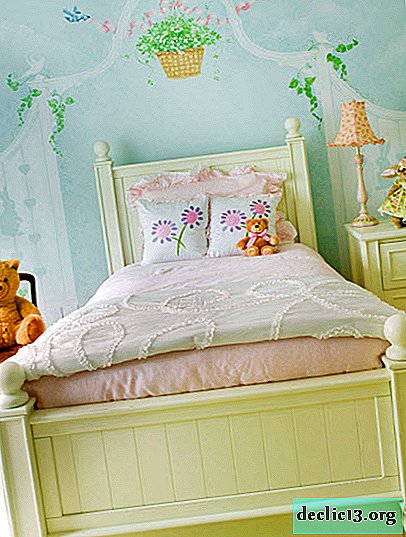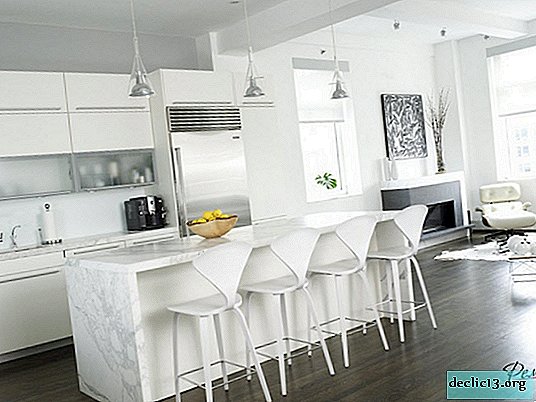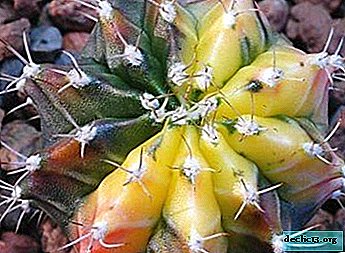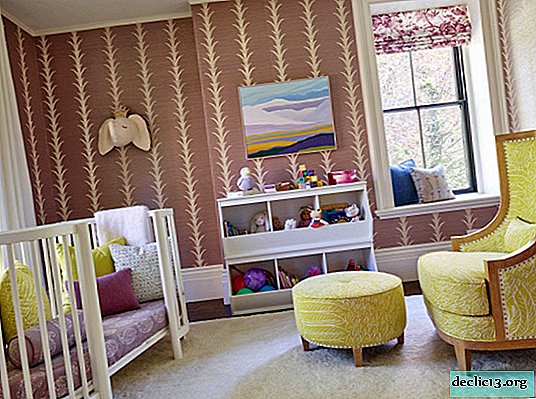Lessons of care: choose a lamp for orchids. How to organize lighting and install appliances at home
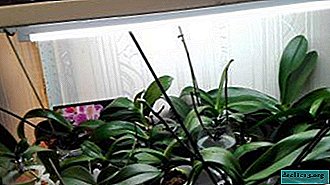
Lighting for any plants plays an important role - it provides energy for growth and flowering. But not all flowers are equally lucky to be on the windowsill at a large south-facing window.
Even greater luck is when other houses or trees do not block the light. Therefore, caring growers think over additional lighting over time. In this article we will talk about why good lighting for an orchid is necessary and how to organize lighting for this plant.
Why is this necessary?
First, we decide why plants need light. Inside the green leaves of the orchid, photosynthesis occurs, carried out by the green pigment - chlorophyll. From the solar spectrum, it absorbs blue and red light using chlorophyll A and B.
Chlorophyll B absorbs sunlight - long red waves at 642 nm. and short blue at 453 nm. Chlorophyll A is involved in the processing of energy obtained at long red waves at 662 nm. and short blue from 410 to 430 nm. The absorption of light is not uniform throughout the day - blue light is absorbed almost all day, and red - in the morning and evening. In winter or in a poorly lit apartment, it is almost impossible to achieve such lighting. Therefore, for orchids grown at home, lamps are required.
Important! When choosing a lamp for an orchid, make sure that it contains both blue and red light.Red helps flowering, and blue helps build up deciduous mass, but only combined lighting will lead to the harmonious development of the flower. We will talk more about which phytolamps are needed for orchids and how to choose them in the corresponding section.
The needs of the flower at different times of the year
 Most orchids need additional lighting from October to March, the rest of the day, natural light should be enough. If the windows are facing north, lamps may be needed from April to September.
Most orchids need additional lighting from October to March, the rest of the day, natural light should be enough. If the windows are facing north, lamps may be needed from April to September.
In spring and autumn, the lamps can be turned on not for the whole day, but as additional lighting during twilight.
The total daylight hours for an orchid - natural or artificial, should not be shorter than 10 hours, but no longer than 12-14 hours.
Different types of orchids need different light intensities.. You can distinguish them by the shape of the leaves. The most photophilous - with narrow, cylindrical leaves or xiphoid. A little less demanding - with pseudobulbs and hard, thick leathery leaves.
Orchids with pseudobulbs and thin leathery leaves will be enough of average illumination. Least demanding plants without pseudobulbs with wide leathery or delicate and soft leaves. Orchids are adjustable flowers. If the lighting is not enough a bit, they will still bloom.
Attention! To overdo it with the light is just as bad as not to lighten. The plant will not take more than necessary, and excess energy can lead to overheating and death.For more details on how much sun and additional lighting are needed at home, an orchid, we suggest reading in another article.
How to organize the backlight?
When is she needed?
From October to March, all orchids need lighting regardless of the location of the windows. Located on the north side - almost all year round. On the east and west side at dusk, a little "backlighting" is needed in spring and autumn. Also, weakened plants can be additionally illuminated.
How to choose a device?
A large number of lamps are on the market. For growing orchids, these are suitable:
- Special energy-saving lampsproduced in blue and red spectrum. Manufacturers guarantee that only 20% of the energy is processed by the device into heat, but they should not be placed close to the leaves. The minimum distance is 3 cm.
- Fluorescent lamps. Using gases, such as mercury, they produce ultraviolet light, which becomes visible due to the coating of the lamp with a phosphor. For orchids, devices with shades of 33 and 840 are suitable.
 Metal halide lamps, also called discharge lamps. These devices can be of any shape; special models for growing plants are also available.
Metal halide lamps, also called discharge lamps. These devices can be of any shape; special models for growing plants are also available.- Mercury discharge lamps work the same way as luminescent, but have a different marking. Choose those whose glow temperature is in the range from 3.200 to 200 K.
- LED lamps, otherwise LEDare considered optimal for floriculture. In stores you can find combined models with red and blue light with a ratio of 8/1 or 5/1 red and blue.
So which lamp is the best for highlighting orchids?
Special fitolamps that emit light in the desired intensity and wavelengths are perfect. The most popular are fluorescent and LED. These are optimal options for both amateurs and experienced gardeners. If you are just a beginner, you can buy a regular energy-saving light bulb, but you should not expect a special effect from it, so it's still better to install an inexpensive led lamp.
If you are an amateur and you have only one or two flowers, you should not spend money on a special paw, it is energy-saving enough. And to maintain a large number of exotic orchids, you will need professional lighting.
What color should the rays be?
Preferred for orchids is light with long red and short blue waves. You need to buy either a single lamp that combines both of these spectra, or separate ones with a red and blue glow. In the second case, blue turns on for the whole day, and red - at dusk.
Installation
There are several options for lighting orchids:
- For a small window sill, an office lamp on a screw mount or with a clothespin is suitable.
- For a dozen low orchids, compact fluorescent lamps located above the foliage are suitable (photosynthesis practically does not occur in flowers, it makes no sense to illuminate them). You can fix them on the underside of the shelf shelf or the window bar.
Reference! The first and second types of fixtures are best combined with reflectors - so more light will fall on the flowers. For this purpose, you can use not only special reflectors, but also an ordinary mirror.
- If you have a winter garden, you need high-quality ceiling lighting with discharge lamps of at least 250 watts of power.
Next, a visual video about lighting for an orchid using pendant lamps:
Duration
Orchids are accustomed to a long daylightup to 12 hours on average. The specific lighting standards are individual and depend on the variety of orchids. The minimum time frame is 10 hours, the maximum is 16.
Effect on the plant
Correctly installed lighting has a positive effect on the plant, causing the growth of green mass and enhancing flowering. In winter, artificial light will prevent the plant from falling into a dormant state, which is why it will bloom more often.
Errors and their consequences
An inexperienced grower can make such mistakes in lighting plants:
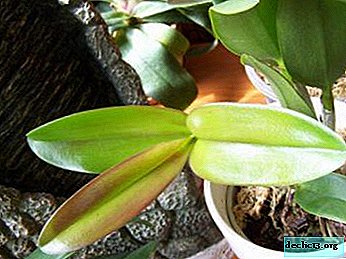 Incorrect lamp light selection. With an abundance of red and the absence of blue, the orchid will bloom very abundantly, but the peduncle grows too thin and can break. On the contrary, only blue lighting will make the green part strong, but the orchid will not bloom.
Incorrect lamp light selection. With an abundance of red and the absence of blue, the orchid will bloom very abundantly, but the peduncle grows too thin and can break. On the contrary, only blue lighting will make the green part strong, but the orchid will not bloom.- Due to excess light, the leaves may turn slightly red. In summer, this will not do much harm, and in winter the plant may die.
- The lack of light manifests itself in dark green leaves with a blue tint, while they become soft, wither. In such a situation, the orchid will never bloom, and with a long lack of light it will die.
General Care
Orchids are very delicate flowers that require careful care.. If you want your flower to grow actively, follow these rules:
- The room is provided with high humidity so that the plant does not dry out.
- Make the soil not too dense, air should flow to the roots. At the same time, the orchid does not like drafts.
- Alternate watering the plants with complete drying of the substrate.
- The temperature in the room should not rise above 30 ° C or fall below 10 ° C.
- Orchids love bright light, without which they cannot bloom and stop growth.
You will find all conditions of this flower in this article.
Conclusion
Orchid - a beautiful and delicate flower, requires careful care and care. Initially brought from the tropics, the plant needs a bright and plentiful light, regular watering. Take care of your orchid and it will thank you with magnificent flowers.

 Metal halide lamps, also called discharge lamps. These devices can be of any shape; special models for growing plants are also available.
Metal halide lamps, also called discharge lamps. These devices can be of any shape; special models for growing plants are also available. Incorrect lamp light selection. With an abundance of red and the absence of blue, the orchid will bloom very abundantly, but the peduncle grows too thin and can break. On the contrary, only blue lighting will make the green part strong, but the orchid will not bloom.
Incorrect lamp light selection. With an abundance of red and the absence of blue, the orchid will bloom very abundantly, but the peduncle grows too thin and can break. On the contrary, only blue lighting will make the green part strong, but the orchid will not bloom.